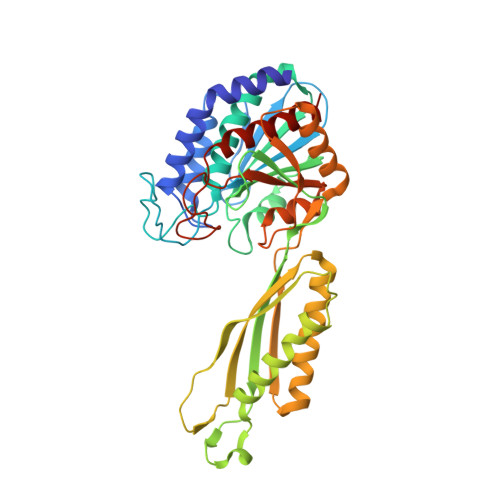Structure of an amidohydrolase, SACOL0085, from methicillin-resistant Staphylococcus aureus COL
Girish, T.S., Vivek, B., Colaco, M., Misquith, S., Gopal, B.(2013) Acta Crystallogr Sect F Struct Biol Cryst Commun 69: 103-108
- PubMed: 23385746
- DOI: https://doi.org/10.1107/S1744309112049822
- Primary Citation of Related Structures:
4EWT - PubMed Abstract:
Staphylococcus aureus is an opportunistic pathogen that rapidly acquires resistance to frontline antibiotics. The characterization of novel protein targets from this bacterium is thus an important step towards future therapeutic strategies. Here, the crystal structure of an amidohydrolase, SACOL0085, from S. aureus COL is described. SACOL0085 is a member of the M20D family of peptidases. Unlike other M20D peptidases, which are either monomers or dimers, SACOL0085 adopts a butterfly-shaped homotetrameric arrangement with extensive intersubunit interactions. Each subunit of SACOL0085 contains two Mn(2+) ions at the active site. A conserved cysteine residue at the active site distinguishes M20D peptidases from other M20 family members. This cysteine, Cys103, serves as bidentate ligand coordinating both Mn(2+) ions in SACOL0085.
Organizational Affiliation:
Molecular Biophysics Unit, Indian Institute of Science, Bangalore 560 012, India.

















